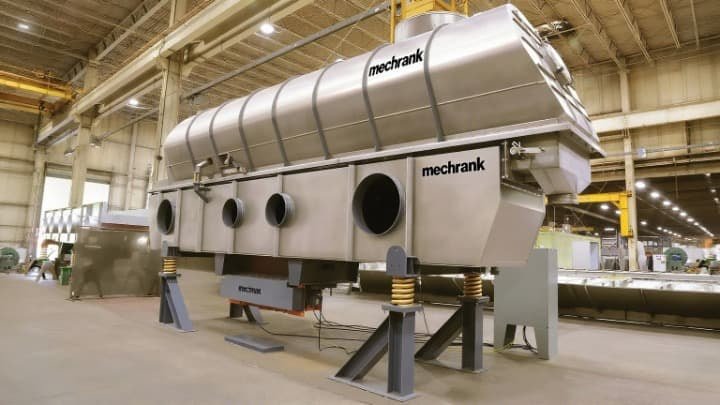A continuous dryer takes water out of materials as they move through the machine. The materials do not stop moving. Batch drying works with separate loads, but continuous drying keeps things moving. This gives steady and efficient results. Many industries use this technology. These include food processing, agriculture, chemicals, and pharmaceuticals. They need it for making large amounts of products. The worldwide market for industrial dryers was about $2.01 billion in 2024. The market is growing fast. This is because more people want food and medicine.
Métrica | Value / Description |
|---|---|
Tamaño del mercado (2024) | Acerca de 2.01 billion USD |
Projected Market Size (2035) | About 3.8 billion USD |
Key Growth Drivers | Food processing, pharmaceuticals, agriculture, energy saving, more processed food needed |
Dominant Application Segment | Procesado de alimentos |
Principales conclusiones
Continuous dryers take water out of materials as they move. This makes drying faster and more even than batch drying.
There are different types of continuous dryers and airflow patterns. Each one works best for certain materials and jobs. Picking the right one helps make better products and saves energy.
Continuous dryers use less energy and need less space. They keep products safe by drying gently with low heat.
Cleaning and taking care of parts like filters, seals, and vents is important. This helps dryers work well, last longer, and stay safe.
Smart controls and sensors help keep temperature and airflow steady in continuous dryers. This makes drying better and cuts down on waste.
How Continuous Dryers Work
Continuous dryers operate by consistently feeding wet materials into a drying chamber where they are gradually dried and discharged. This process ensures efficient moisture removal from materials in industries like food processing, pharmaceuticals, and chemicals.
Principio de funcionamiento
A continuous dryer takes water out of materials as they move through the machine. The materials travel on a cinta transportadora or inside a rotating drum. The machine has different zones. Each zone keeps a certain temperature and humidity. Air moves over or along the materials to help dry them evenly.
Continuous dryers like tunnel dryers use a conveyor belt to move materials through zones with set temperature and humidity.
Air blows over the materials, either across or along their path, to dry them evenly.
The materials keep moving, so drying does not stop. This helps make products that are always the same quality and in large amounts.
Batch drying stops to let moisture spread or uses quick heat bursts, but a continuous dryer never stops moving the materials.
This steady movement and airflow make drying faster and more even.
The science behind a continuous dryer is about how heat and water move. Engineers use models to see how heat goes into the material and how water leaves it. In fluidized-bed dryers, air mixes with solids to dry them better. The Peclet number helps show how air moves in the dryer. How heat moves inside each piece is important, especially if the material does not carry heat well. Water leaves the material by capillary flow and vapor diffusion. The material’s properties and the air’s temperature both change how well the dryer works. Engineers use tests and computer models to learn and make the process better.
Consejo: Keeping airflow and temperature steady is important for even drying and good product quality in a continuous dryer.
Componentes básicos
A continuous dryer has many important parts. Each part has a special job in drying. The way these parts are designed and put together can change how well the dryer works.
Componente | Role in Drying Process |
|---|---|
Shell | The shell is the main body. It keeps the dryer strong and holds in heat. |
Flights | Flights lift and drop the material inside the drum. This helps heat spread and dries everything evenly. |
Burner | The burner makes heat by burning fuel. It creates hot gases or flames. |
Air System | The air system uses fans and ducts to control airflow, temperature, and remove moisture. |
Sistema de accionamiento | The drive system turns the drum. This keeps the material moving for even drying. |
Sistema de control | The control system checks and changes things like temperature and moisture to get the best drying. |
How well a continuous dryer works depends on how these parts work together. For example, a moving floor and mixing motion keep materials moving so heat can reach everywhere. Air from a heat exchanger can use different energy sources to dry better. Smart zoning and airflow make sure water leaves evenly. Preheating materials in a hopper saves energy and work. Automatic controls let workers change settings right away, which saves energy and keeps products the same. Some dryers, like FlowDrya, use less power and need less fixing than old belt dryers. Good heat transfer, airflow, mixing, and smart controls make the dryer work better, cost less, and run smoothly.
What Are the Different Types of Continuous Dryers?
Continuous dryers come in various forms, including belt dryers, rotary dryers, and fluidized bed dryers, each serving distinct industrial drying needs.

By Airflow Direction
Airflow direction is very important in a continuous dryer. It helps decide how fast materials dry and how much energy is used. The way air moves can also change the quality of the product. Different airflow patterns work better for different things.
Tipo de secadora | Airflow Direction Relative to Material Flow | Key Characteristics and Impact on Drying Efficiency |
|---|---|---|
Cross-Flow Dryer | Air flows perpendicular to material flow | Air blows across the material. How well it dries depends on air temperature and speed. If air moves too slowly, some parts stay wet. This type may not dry everything evenly. Sometimes, the product quality is not as good. |
Counter-Flow Dryer | Air flows opposite to material flow | Air goes up while the material goes down. This helps remove water better and saves energy. It can dry about 40% faster than cross-flow dryers. It also makes the results more even. |
Mixed-Flow Dryer | Combination of airflow directions | Uses both cross-flow and counter-flow ways. This mix tries to make drying both fast and even. |
Nota: Airflow must be right so all material gets hot air. If air does not move evenly, some parts get too dry and others stay wet.
A counter-flow system is often best for grains and similar things. Wet material goes in at the top, and dry air comes in at the bottom. This setup saves energy and makes the product more even. Cross-flow dryers are good for things that can have some wet spots. Mixed-flow dryers are good when you need both speed and even drying.
By Design (Belt, Rotary, Fluidized Bed, Tunnel)
There are many types of continuous dryers. Each type is good for certain materials and jobs. The choice depends on how the dryer moves things, how it heats them, and what it is used for.
Tipo de secadora | Principio operativo | Key Features and Differences | Typical Applications and Suitable Materials |
|---|---|---|---|
Belt Dryer | Material moves on a conveyor belt. Agitators or paddles mix the material for even drying. | Stops clumps from forming. Handles gently. Good for soft or sticky things. | Food (fruits, vegetables), chemicals, pharmaceuticals |
Secador rotativo | Material tumbles inside a rotating drum with internal lifters. | Drum turns and tilts to move material. Some have more than one pass for better drying. Can dry a lot at once. | Minerals, fertilizers, grains, biomass |
Fluidized Bed | Air or vibration lifts powders or granules, making them float. | Hot air goes through holes in plates. Particles touch air closely. Dries fast and evenly. | Powders, granules, pharmaceuticals, chemicals |
Túnel de secado | Material sits on trays or trucks that move through a heated tunnel. | Heated air moves in a set way. Can dry big batches. Good for things that need even drying. | Ceramics, food, packaging, textiles |
Belt dryers are best for soft foods and things that need gentle care.
Secadores rotativos are used for big loads like in farming and mining.
Secadores de lecho fluidizado are good for powders and granules that need quick, even drying.
Tunnel dryers are used when companies need to dry a lot and want the same results every time.
Consejo: Cyclonic dryers use spinning hot air to dry things like coffee beans and nuts. This way dries fast, dries evenly, and saves energy.
Some industries use special dryers. For example, loop dryers and slasher dryers are used in textiles. Loop dryers dry soft fabrics and heavy piles. Slasher dryers dry yarns without pulling them too much. Fluidized beds and spray dryers are common in medicine and chemical plants for powders and granules.
Paper, ceramics, and packaging companies also use continuous dryers to dry lots of things quickly.
Tray dryers are good for things that cannot take much heat. Air flow jet dryers work best for tiny particles.
Picking the right continuous dryer depends on what you are drying, how fast you need it dry, and the quality you want.
What Are the Advantages and Challenges of Continuous Dryers?
Continuous dryers offer several advantages, including increased efficiency and consistent product quality, but they also come with challenges like high initial costs and complex operation.
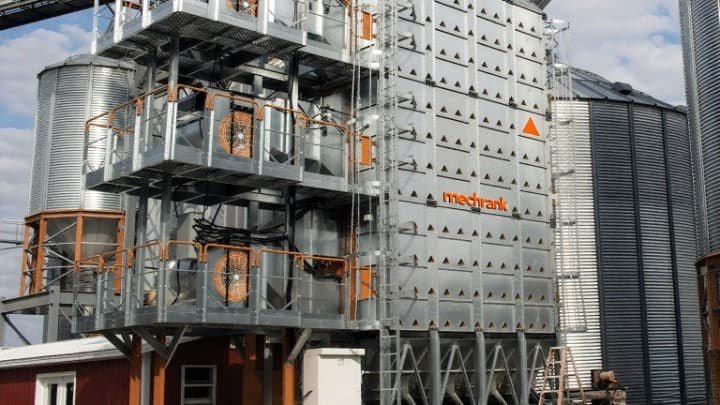
Principales ventajas
A continuous dryer has many good points for factories. Companies use this machine to work faster and make better products.
High drying efficiency means less energy is used. Some dryers use up to 37% less energy than fluidized bed dryers.
The machine is smaller, so it needs less room. This helps save money on care and buying costs.
Drying at low heat keeps products safe from getting too hot. This helps keep the quality high.
Lower heat and short drying times help cut down on VOCs. This is good for the environment.
One continuous dryer can do many jobs at once. This makes the work easier.
You can add more dryers to make more or less product. This helps when you need to change how much you make.
Machines that run all the time and use computers help workers do more. They also mean you need fewer people.
Shorter drying times mean you get finished products faster than with batch dryers.
Secadoras de tambor rotativo, a kind of continuous dryer, can dry many things. They keep drying even and are easy to fix. They work for both big and small jobs.
🟢 Consejo: Continuous dryers often use smart controls and sensors. These keep heat and air steady, which helps keep products good.
When you compare drying ways, continuous dryers like refractance window™ save more energy. They also keep food color and nutrients better than tray drying.
Aspecto | Continuous Drying (Refractance Window™) | Conventional Tray Drying |
|---|---|---|
Eficiencia energética | Más alto | Baja |
Color Retention | Similar to fresh | Less retention |
Nutrient Preservation | Alta | Baja |
Tiempo de secado | Más corto | Más largo |
Common Limitations
Even with many good things, continuous dryers have some problems.
If the heating system breaks, the temperature can change. This can make products not as good.
Belts or trays can move out of place or wear out. This can stop the machine from working.
Bad sensors or controllers can mess up heat and humidity. This can hurt the drying process.
If fans or ducts get blocked, air does not move well. This can make drying uneven.
Problems like rust or broken insulation cost more to fix. They can also make the machine not last as long.
Moving parts can wear out and cause leaks or stops.
It is hard to handle changes in how much material goes in. This can make the quality worse.
There are safety risks like fire or explosions from dust or gas.
Fixing and caring for the machine is hard and costs a lot. You need skilled workers to do it.
The machine costs a lot at first. You also need trained people, so small companies may not use it.
⚠️ Nota: New tools like IoT and AI controls help stop problems and make things safer. But they also make the system harder to run.
What Are the Applications of Continuous Dryers and How Do You Select the Right One?
Continuous dryers are essential in industries like food processing, pharmaceuticals, and chemicals, where they ensure efficient and consistent drying of bulk materials. These dryers operate continuously, enhancing productivity and reducing energy consumption.
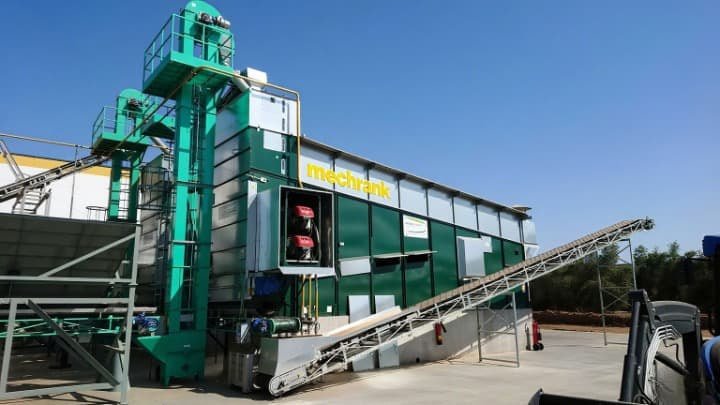
Usos industriales
Many industries use continuous dryers to dry lots of materials fast. This technology helps make many products, like food and chemicals. The table below shows which industries use different dryer types and what they make:
Tipo de secadora | Industries Frequently Using Continuous Dryers | Main Products Processed |
|---|---|---|
Conveyor Dryers | Textiles, Printed Electronics, Ceramics, Food Processing | Fabrics, Coatings, Adhesives, Baked Goods |
Secadores rotativos | Metal Manufacturing, Mining, Mineral Processing, Cement Production, Aggregate Drying | Bulk Solids, Abrasive Materials, Minerals |
Other Industries Using Industrial Dryers | Chemical Processing, Dairy and Food Production, Fertilizer Manufacturing, Cereal and Grain Processing, Paper and Pulp, Plastics Recycling, Waste Management, Water Treatment | Powders, Granules, Pastes, Cereals, Grains, Dairy Products, Chemicals, Electronic Components |
Food and pharmaceutical companies need continuous dryers a lot. These businesses must follow strict rules for safety and quality. Spray dryers and continuous dryers help save energy and money. In the chemical industry, companies pick dryers for their special needs. For example, pharmaceutical plants use conical dryers for some steps. They use Nutsche filter dryers to keep drying safe and clean. Continuous freeze-drying in medicine helps keep things sterile and controls the amount in each dose. This makes it easier to change what is made.
💡 Consejo: Continuous dryers help companies follow rules and keep product quality the same.
Choosing the Right Dryer
Picking the best continuous dryer depends on many things. Each job is different, so companies should check this list:
Material Characteristics: Look at the size and weight of the material. See if there are small pieces. These things change how the material moves in the dryer.
Moisture Content: Find out how wet the material is at the start and end. Decide if the water is on the outside or inside.
Reaction to Heat: Check if the material gets damaged by heat. Pick a dryer with the right heat and way of heating.
Manipulación de materiales: Think about if the material is sticky, rough, or breaks easily. Choose things like non-stick parts or gentle movement.
Production Requirements: Make sure the dryer is big enough for what you need. Check if it fits in your space and works with other machines.
Efficiency and Cost: Compare the price to how much energy and care it needs over time.
The type of material, how wet it is, and how much you need to dry all matter when picking a dryer. If something is very wet, it might need to be dried a little first. How much you want to dry changes the size and speed of the dryer. Sensors and controls help keep the right heat and moisture, so the product turns out well.
What Are the Best Maintenance Practices for Continuous Dryers?
The best maintenance practices for continuous dryers include regular inspection, cleaning, lubrication, and performance checks to ensure optimal efficiency and longevity.
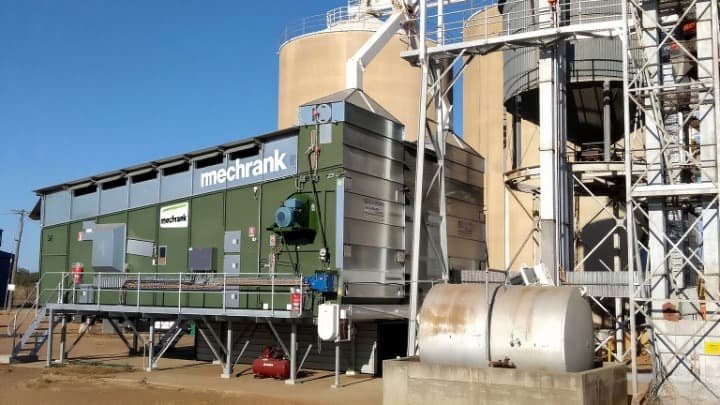
Routine Care
Taking care of dryers helps them work well and last longer. Workers should follow a set plan to stop problems and keep the dryer safe.
Clean lint filters before and after using the dryer. This keeps air moving and lowers fire danger.
Look at vents and ducts for lint or dirt. Take out any buildup so air can flow.
Check the vent hose for bends or cracks. Change broken hoses to stop leaks and mold.
Use metal ducts, not soft ones. Metal does not bend and traps less lint.
Make sure the outside vent flap opens when the dryer runs.
Look at drum seals, door seals, and hinges every week or month. Change old parts to keep heat in.
Check heating parts or gas burners for damage. This keeps drying temperatures right.
Test safety controls like thermostats and shut-off switches.
Have a pro check the dryer once a year or more if used a lot.
Write down all checks, fixes, and cleaning in a log.
The table below shows how often to check each part:
Component/Activity | Recommended Frequency | Notas |
|---|---|---|
Visual inspections | Before and after each use | Look for damage, lint, or loose parts |
Lint filter cleaning | Before and after each use | Prevents airflow problems and fire hazards |
Deep cleaning (interior, vents) | Weekly or monthly | Maintains airflow and efficiency |
System calibration | Weekly or monthly | Ensures accurate temperature |
Drum seals, door seals, hinges | Weekly or monthly | Prevents heat loss and leaks |
Exhaust vent or condenser unit | Weekly or monthly | Prevents blockages and overheating |
Heating element or gas burner | Monthly to quarterly | Maintains drying efficiency |
Electrical connections | Monthly or quarterly | Prevents hazards and ensures reliability |
Professional servicing (general use) | At least annually | Follow manufacturer guidelines |
Professional servicing (heavy use) | Quarterly or monthly | Needed for high-volume environments |
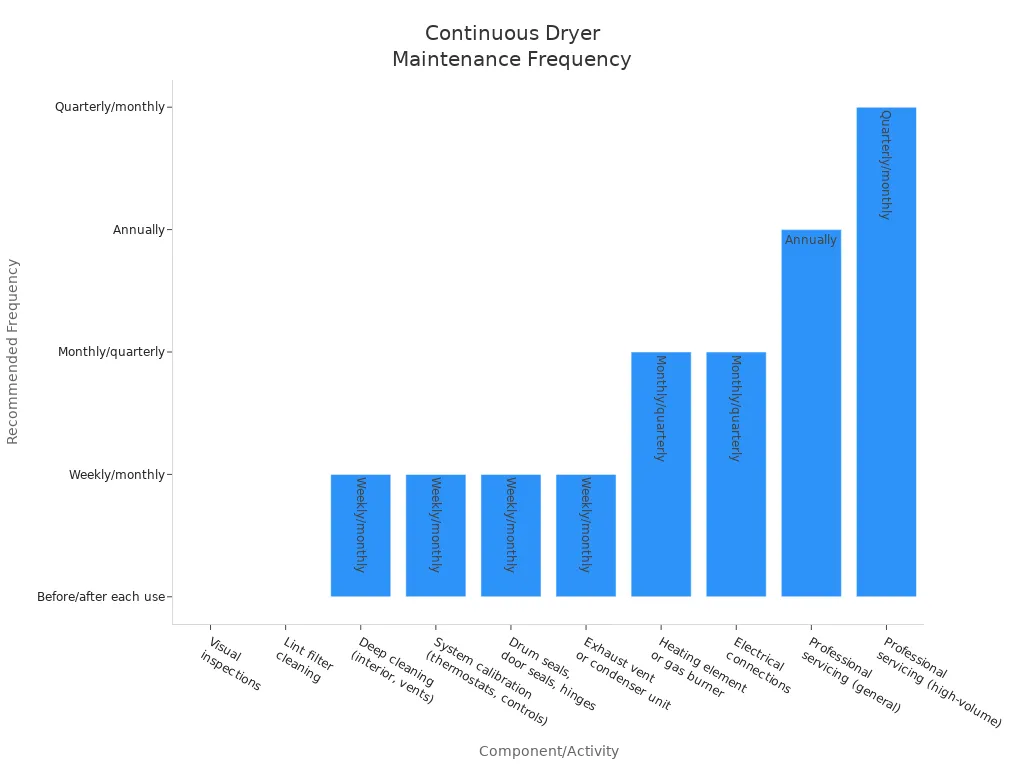
🛠️ Consejo: Cleaning and checking the dryer often stops it from getting too hot, helps it work better, and saves money on repairs.
Performance Optimization
Workers can help dryers work better and make good products by doing these things:
Use dryers with moisture sensors or heat pumps to save energy and stop over-drying.
Take out dry items right away to get ready for the next load and save energy.
Keep loads balanced. Do not put in too much or too little to protect the dryer and dry things evenly.
Dry things when energy is cheaper to save money.
Teach workers how to use, sort, and care for the dryer the right way.
Watch how much energy is used and change settings to fix problems.
Use smart monitors. Real-time moisture sensors help control drying, cut waste, and keep quality high.
Use extra sensors so the dryer is always checked, even during repairs.
📈 Nota: Watching the dryer in real time and caring for it often helps stop breakdowns, cuts waste, and keeps products safe and the same every time.
Factories get faster drying and save energy with the right dryer. They also make better products when they pick the best drying machine.
Microwave and tower dryers dry things evenly. They are small and easy to fix.
Picking the right dryer for each job stops mistakes. It also saves money and keeps products good.
Expert Tip | Why It Matters |
|---|---|
This helps the dryer work well and follow rules | |
Ask dryer makers for special help | This makes it easier to use and helps the business grow |
Companies should keep dryers clean and ask experts for help to get the best results.
PREGUNTAS FRECUENTES
What materials can a continuous dryer handle?
A continuous dryer can dry many things. It works with grains, powders, food, chemicals, and textiles. Each type of dryer is best for certain products. Operators need to look at the size, wetness, and heat needs of the material before picking a dryer.
How does a continuous dryer save energy?
Continuous secadores use steady air and heat to dry things. This makes drying faster and more even. Many dryers have sensors and smart controls. These help use less energy and cut down on waste.
What safety risks come with continuous dryers?
Operators can face dangers like fire, dust blasts, and too much heat. Cleaning and checking the dryer often helps stop these problems. Safety sensors and auto shut-offs give extra safety.
How often should maintenance occur?
Most experts say to check for lint and clogs every day. Once a month, look at seals, vents, and heating parts. A pro should service the dryer every year to keep it safe and working well.
Can a continuous dryer process heat-sensitive products?
Yes, many continuous dryers use low heat and gentle air. This keeps heat-sensitive things like medicine and some foods safe. Operators should pick the right dryer for these products.

